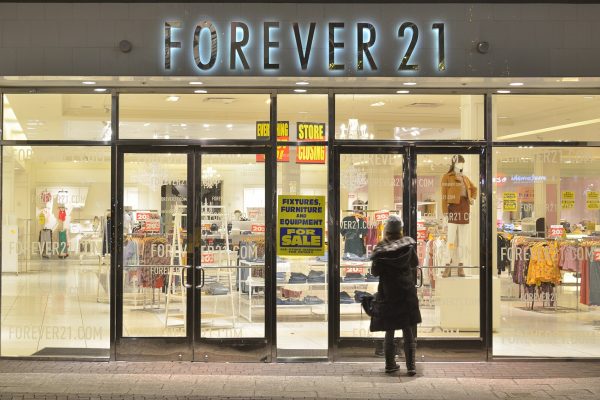The Fatalities of Fast Fashion
In this social-media-dominated era, trends seem to surface and fade away at lightning speed. Gone are the days when a red-letter clothing style used to define a whole decade…The seventies are associated with flare jeans, the fifties with tea-length dresses, the nineties with the grunge. But the 2020s have been swallowed whole by micro-trends that don’t linger on for much longer than a few months. Nowadays, fashion retailers are in a race to sell more and more trendy products for ultra-cheap prices. And consumers tag closely behind them to be able to keep up.
Fast fashion is popular clothing modeled after designs from the runway and adapted into articles that are more affordable for the general public. Indeed, the progression of fashion in itself isn’t inherently bad. People are naturally evolving through social, political, and cultural changes that are reflected on their wardrobes. The current mood of the people is a basic frame for the current fashion. What is so alarming about present-day trends, however, is that they are fueling a culture of overproduction and overconsumption due to their short lived nature.
In these times, the world consumes 80 billion pieces of new clothing every year, 400% more than it did just nearly twenty years ago. The omnipresence of fast fashion brands can be observed all-around the media. One scroll through TikTok, and a person is very likely to come across advertisements, hauls, or recommendations from stores such as Shein, ASOS, and Zara. Their seemingly endless supply of goods, paired with extremely low prices, are definitely an appealing offer. It makes one wonder what dark clouds could possibly plague the fast fashion industry. But the actual truth is quite daunting, and as author and journalist Lucy Siegle puts it, “Fast Fashion isn’t free. Someone, somewhere is paying.” The reality is that in order to furnish stockpiles of trendy, inexpensive products, fashion retailers heavily rely on cheap labor that can secure them with profit.
While these brands gain millions of dollars everyday for manufacturing an ocean of items that are consumed in just as big of a scale, sweatshop workers have to bear the cost of exploitative labor. According to CBS News, a 2016 U.S. Department of Labor study discovered pay violations in 85% of L.A. garment shops. Francisco Tzul who spent almost 30 years working in garment factories in Guatemala, Mexico and the United States, told CBS, “There is some kind of a modern slavery going on the sweatshops…They paid us like 5 cents, 6 cents for a piece.” Tzul is one of many individuals who have toiled away in sweatshops just to be “rewarded” with subminimum wage. In most cases, it’s this exploitation that keeps fast fashion brands running, it guarantees that a mass pile of products are being fabricated at the expense of workers, and delivered to the doorsteps of people who are unaware of how these clothes are made and where they come from.
Shein, perhaps the most infamous of all of these stores, has become quite a cult favorite among Gen Z and Millennial shoppers. According to Vox, in June of 2021, Shein surpassed Amazon for the title of most downloaded shopping app on iOS App Store in over 50 countries. The Chinese retailer adds around 1,000 items to its website everyday, sparking new trends and disposing of “old” ones in very short cycles. Young consumers plunge in the opportunity of indulging in these trends for ultra-low prices. And while there’s nothing wrong with opting for inexpensive clothes, it’s the overwhelming consumption of these products that perpetuates the culture of fast fashion. People acquire an item to participate in a trend that will be gone in a flash. The moment it’s over, they refrain from wearing that very piece again because it’s no longer considered stylish by fast fashion standards. It’s a capitalist cycle that’s constantly fed by stores like Shein which prompt the purchase of items with a brief “wearability” period.
Furthermore, fast fashion has serious environmental consequences. According to the Princeton Student Climate Initiative, 57% of discarded clothing winds up in landfills, where they are left to accumulate and then taken to an area to be incinerated. This operation poses numerous threats to public health and the environment due to the vast release of toxic substances and poisonous gases that pollute the air. On top of this, the fashion industry dries up water sources and produces plastic microfibers that end up in the ocean where they harm aquatic life. In a fast-fashion-saturated world, these problems are magnified with the growing mountain of clothes that are thrown away on a daily basis.
However, the good news is that there are ways to curtail the dangers of fast fashion. Firstly, it’s important to consider donating clothes before disposing of them. Focus on buying clothes that you really want, not just ones pushed to you by fast fashion companies. Lastly, thrift clothes whenever possible to reduce the environmental issues that stem from creating new clothes.






